1997 McLaren MP4-12
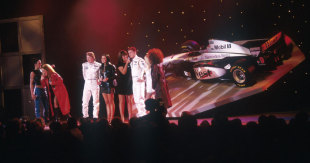
For sheer showmanship it's unlikely McLaren's 1997 launch will ever be trumped. The Spice Girls, Jamiroquai and bucket-loads of dry ice were on hand at London's Alexandra Palace to welcome the new MP4-12 into the world. The extravagance was not without purpose however, as the team was launching its new silver livery and West sponsorship, consigning the classic Marlboro livery to the history books in the process. The car itself had been unveiled to specialist journalists at a low-key event beforehand, but it was displayed in an interim papaya orange livery in deference to Bruce McLaren's early cars. However, the new silver livery took centre stage in Alexandra Palace and was broadcast around the world with Sporty Spice commenting, "Sexy, isn't it?" The car went on to take McLaren's first win in four years while the livery remained pretty much untouched until the introduction of a chrome finish in 2006.
1999 BAR 01

The livery (or liveries) was also the talking point at BAR's first car launch in 1999. The new outfit was owned by tobacco company BAT, which saw an opportunity to gain exposure for two of its brands by putting one on either car. Jacques Villeneuve's BAR 01 would sport the Lucky Strike brand while Ricardo Zonta's car would be decked out in 555 colours. However, the FIA took a dim view of the mixed liveries and ordered the team to pick one or the other. The team's solution was to rather ingeniously paint a zip down the middle of the car with Lucky Strike on one side and 555 on the other. The controversy gained the team some column inches, but the car's pace was less eye-catching as it failed to score a point all season.
2008 Force India VJM01
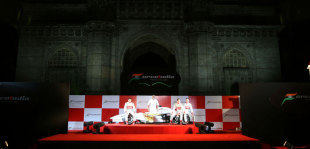
When Vijay Mallya took over the ailing Spyker squad at the end of 2007 he decided to completely rebrand the team. In 2008 it would be known as Force India and would run under Indian nationality, and so it was only fitting that the new car should be launched in India. The only issue was that it wasn't a new car but merely a modified version of the previous Spyker. Nevertheless, Mallya pulled out all the stops with a bells-and-whistles launch in Mumbai. The car was unveiled by drivers Adrian Sutil and Giancarlo Fisichella on a stage in front of the Gateway of India before the reams of Bollywood stars in attendance decamped to Mallya's yacht for an after party. The car failed to score a point all year.
2005 Jordan EJ15

The formula for Jordan launches down the years had been simple: Make it yellow and drape it in scantily-clad women. In 2005, however, new Russian ownership meant the final Jordan launch was held in Moscow's Red Square in February - ensuring everybody was well wrapped up for the car's unveiling. A thin dusting of snow greeted the EJ15 and its two new drivers - Narain Karthikeyan and Tiago Monteiro - before the party, including Bernie Ecclestone, was moved indoors where scantily-clad women danced through the night. A slightly sombre Eddie Jordan watched on knowing it was the last time he would see his name above a car launch having sold his outfit to the Midland Group over the winter. The car spent most of the season at the back of the grid, but Monteiro did score a podium at the farcical US Grand Prix when all the Michelin-shod cars had to pull out due to safety concerns.
1974 Hesketh 308
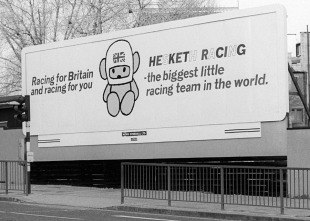
Hesketh Racing broke all the rules on a cold morning in January 1974 when it unveiled its car with the help of nothing more than a teddy bear and a drop of whiskey. The man behind the festivities was Lord Alexander Hesketh, who had summoned the world's media to his stately home in Easton Neston. Lord Hesketh had the flu on the day but made a speech to the press with the help of some medicinal whiskey. He also took the opportunity to launch his campaign to "Back British Bears", and stuck a "Super Bear" mascot on the front of the 308. The meaning of this was slightly lost at the time - and still is now - but to help the journalists understand, a book called The Heavily Censored History of Hesketh Racing was handed out on the day. In the opening passage Lord Hesketh wrote: "When I first entered motor sport, most people thought me a buffoon with a lot of money and astonishingly little sense. However, this theory is now totally demolished, not so much through the heroic efforts of a young man with a long history of attempting suicide by thumping into Armco called [James] Hunt, nor by a figure sought by Interpol in every country where loons do speed, known as Bubbles [team manager Anthony Horsley], nor by the invention of the mad man [Harvey] Postlethwaite, but by the fact that I have persuaded you to unload 1s/6d for this nonsensical publication. Nothing has given me greater faith in the future of Hesketh Racing than this selfless act of extravagance on your part which indicates that Bears are destined to breed at a rate hitherto unknown in British history." Nothing has quite matched the launch since.
2007 Honda RA107
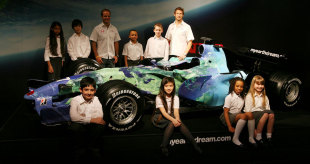
Honda launched its Earth Dreams livery on the RA107 car in front of a slightly bemused audience at the Natural History Museum in London. The car featured a map of the world rather than sponsors in the hope of promoting environmental messages. The management team touted it as a new form of sponsorship in F1, whereby companies would make a donation to an environmental charity in order to be associated with the team and appear on its website. Many were sceptical and it was pointed out that F1 had already been carbon neutral since 1997 when the FIA started financially supporting the Scolel Te project in South America. The car was terrible, the livery confusing and two years later Honda withdrew from F1.
2003 Sauber C22

In 2003 Sauber launched its new car on perhaps the least suitable surface possible. In a rare display of glitz and glamour from the Swiss squad, it celebrated its tenth year in Formula One by unveiling the C22 in the centre of an ice rink in Zurich. Fortunately the car wasn't demonstrated on the slippery surface - it had already completed significant testing on track earlier in the month - and the only on-ice action came from the Movenpick Art on Ice acrobatics team. Drivers Heinz-Harald Frentzen and Nick Heidfeld managed to remain upright throughout the ceremony while Peter Sauber gave a motivational speech: "We are struggling against the giants like Ferrari, McLaren and Williams. There are seven works teams, backed by the manufacturers, and there are three others who are private and independent. We are one of those. But we want to be chasing the top three teams for fourth place and, if we can, we want to take fourth place ahead of Renault and the others. I don't know if we can succeed, but that is our aim and target." By the end of the season Sauber were sixth in the standings but did score a podium at the US Grand Prix.
2001 Toyota TF101
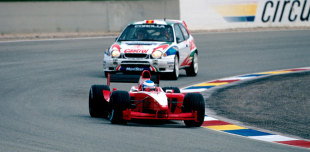
In 2001 Toyota launched its first Formula One car without the intention of ever racing it. The TF101 was unveiled to the press at Paul Ricard alongside the Japanese giant's new driver line-up of Allan McNish and Mika Salo. The car, with its brand-new V10 engine, hit the track later that day and was joined by Toyota's GT-One Le Mans car and its Corolla rally car as a PR exercise. By the end of the year the TF101 had completed 22,967 km of testing at 11 circuits around the world and the team's findings contributed towards the TF102 that competed in 2002. At the launch of the TF101, Toyota Motorsport President Ove Andersson said: "A big-size cheque book alone does not win races." It proved to be the case as Toyota struggled for eight years in the sport before pulling out in 2009 without a win.
2001 Minardi PS01

One of the latest launches in F1 history was accomplished by Minardi in 2001 when it unveiled the PS01 on the eve of the first race of the season. With paddock activities set to kick off for the opening round in Australia on March 1, Minardi unveiled its car in Melbourne on February 28. Drivers Fernando Alonso and Tarso Marques were on hand to whip off the covers of one car in front of the Melbourne state parliament, while the other was still being hastily put together in the garage back at the circuit. Remarkably, Alonso managed to finish 12th in the Australian Grand Prix four days later (Marques retired) but the PS01 failed to score a point all season.
2011 McLaren MP4-26
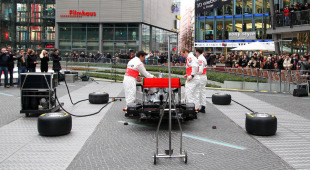
With most of its rivals launching in the pit lane at the first test, McLaren decided to buck the trend by assembling its car in front of a half-frozen crowd at Berlin's Potsdamer Platz. Members of the public brought various bits of the car through the audience and placed them between four Pirelli tyres for the McLaren mechanics to assemble. As the car started to take shape, drivers Lewis Hamilton and Jenson Button also made their way through the crowd to take a closer look at the team's latest creation. "It's great to see how many fans braved the Berlin weather to come to today's event," Hamilton said. "I think people saw a unique way of revealing our 2011 car, something that's never been done before." However, when the car hit the track in testing it suffered from mechanical issues and a lack of pace before a last-minute exhaust revamp made it competitive just in time for the first round in Australia. It went on to win six races but was outperformed over the course of the season by Sebastian Vettel and Red Bull.
Laurence Edmondson is deputy editor of ESPNF1
© ESPN Sports Media Ltd.
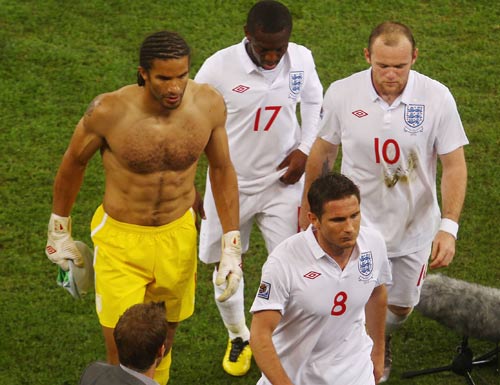 Laurence Edmondson is deputy editor of ESPNF1 Laurence Edmondson grew up on a Sunday afternoon diet of Ayrton Senna and Nigel Mansell and first stepped in the paddock as a Bridgestone competition finalist in 2005. He worked for ITV-F1 after graduating from university and has been ESPNF1's deputy editor since 2010
Laurence Edmondson is deputy editor of ESPNF1 Laurence Edmondson grew up on a Sunday afternoon diet of Ayrton Senna and Nigel Mansell and first stepped in the paddock as a Bridgestone competition finalist in 2005. He worked for ITV-F1 after graduating from university and has been ESPNF1's deputy editor since 2010

